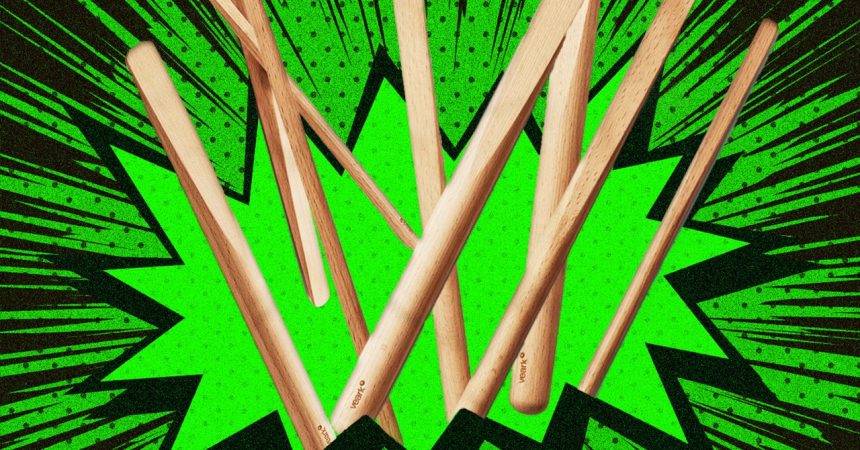Richardt, a sculptor working with steel, brass, and wood, has also spent over a decade crafting minimalist designs for the Danish design studio Frama. His portfolio includes a diverse range of pieces, from furniture like a daybed and lounge chair to everyday objects like candle holders and a shelving system. He even designed a minimalist lamp for the renowned restaurant Noma. One particular creation, a simple stirring stick dubbed “Tool One,” initially didn’t find a home with Frama. However, Richardt’s persistence led him to Veark, a Copenhagen-based kitchenware studio specializing in professionally-inspired tools. Veark’s founders, Daniel Ronge and Christian Lorentzen, immediately recognized the potential of the unassuming stick, embracing its elemental design.
While seemingly simple, the inspiration for Tool One draws partly from traditional Asian utensils, specifically cooking chopsticks. Often made from bamboo, these chopsticks are frequently used by professional chefs, particularly in stir-fry cooking, for tasting and sampling. Richardt’s personal experience with using chopsticks to stir his oatmeal highlighted their limitations for certain tasks, sparking the idea to create a larger, more versatile version. He notes the existence of larger chopsticks in Japan, typically used in pairs for stirring, which provided further inspiration for his single-stick design capable of flipping pancakes and performing other kitchen tasks.
Beyond its aesthetic minimalism, Tool One offers practical advantages. Wooden utensils, with proper care and cleaning, can outlast silicone alternatives by decades. This longevity aligns with growing concerns about the potential toxicity of certain materials used in everyday kitchen tools, such as black plastic spatulas. The shift towards natural and durable materials represents a broader trend in design, a movement towards simplicity and functionality, and away from potentially harmful synthetics.
The design world has been gravitating towards minimalism for some time. This trend is evident in the popularity of streamlined kitchen tools and stackable bowls from brands like Joseph Joseph. Similarly, Jony Ive’s influence on technology design mirrors the minimalist ethos prevalent in classic industrial design applied to iconic chairs and lamps. This reductionist approach, however, can sometimes be taken to extremes, as seen in the muted color palettes of some Scandinavian children’s toys or the stark simplicity of certain nativity sets, where minimalism can border on austere and even absurd. Richardt’s stirring stick arguably represents the pinnacle of this minimalist trend, raising the question of why such a basic object can hold so much appeal.
The appeal of Tool One goes beyond mere minimalism. It evokes a primal connection to cooking, a return to basics. As WIRED senior editor Jeremy White pondered, the stick’s desirability lies in its unexpected simplicity. Does it perhaps possess a certain ruggedness, a masculine appeal, reminiscent of a tool a chef like Carmy Berzatto from “The Bear” might wield in a bustling kitchen? Richardt himself acknowledges the surprising satisfaction derived from using such a humble tool. The act of stirring with a stick evokes a primal feeling, a connection to a simpler time, almost a nostalgic callback to our Neanderthal ancestors.
The stick, therefore, transcends its utilitarian purpose. It becomes a statement, a symbol of a broader design philosophy that embraces simplicity and functionality. It challenges conventional notions of kitchen tools, offering a minimalist alternative to overly engineered gadgets. Its appeal lies in its elemental nature, its connection to the past, and its quiet defiance of the complexities of modern life. In a world saturated with superfluous design, the stick stands as a testament to the power of less.



